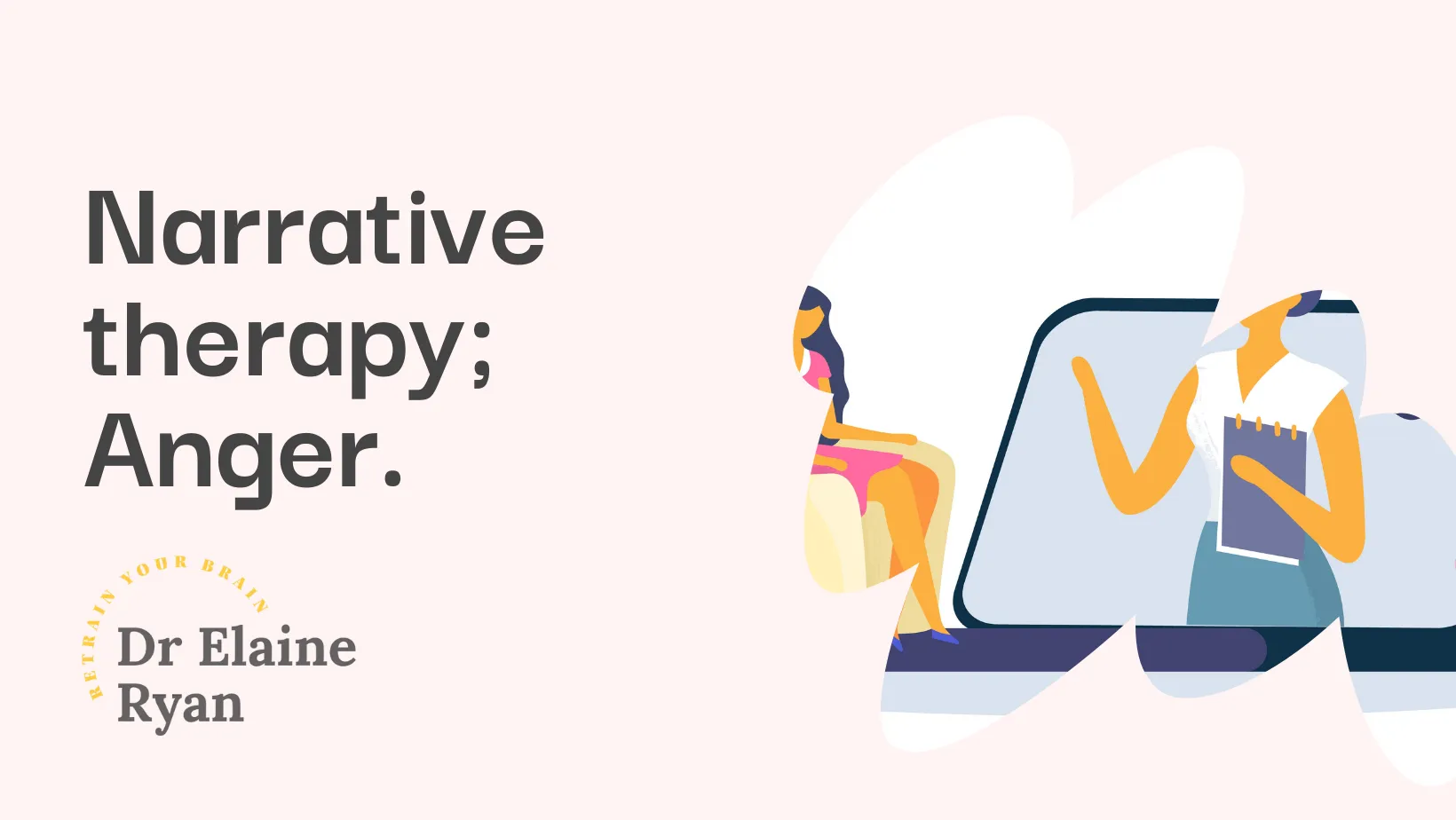What do the stories we tell ourselves have to do with feeling angry? Well, quite a lot, according to narrative therapy. Narrative therapy is all about the stories we tell ourselves and how they affect us emotionally and it can help you rewrite your story to create more distance between you and your anger; you are not your anger, so to speak.
Narrative therapy is a therapeutic approach that centres on the stories we tell about our lives. It operates on the premise that our narratives shape our identities and experiences. If this is the first time you have come across this type of therapy, there is a more in-depth account of it here.
Narrative therapy was developed by Michael White and David Epston in the 1980s. And very briefly, it states that
- People are separate from their problems.
- People have many skills, competencies, beliefs, values, commitments, and abilities that will assist them in reducing the influence of problems in their lives.
- People’s lives and identities are shaped by the stories that they and others tell about them.
Retrain Your Brain® Anger Management

Dr Ryan’s online self-help course for anger
How narrative therapy helps with anger
One of the main ideas of the therapy, and one that I found personally very helpful when in session with a person with anger issues, is the concept of “externalization”, where the problem, in this case, anger, is separate from the person. Many of the people that I have worked with over the years have been labelled;
- you’re angry
- you can’t control your temper
- there’s something wrong with you
and they begin to internalise it and feel defective or incompetent and not capable of controlling their emotions. That might be true as they enter therapy, that controlling their emotions is difficult, but that does not mean they can’t learn how to do it, and it certainly does not mean that the anger should make up their identity.
With narrative therapy, you can learn about ‘reauthoring’ or ‘re-storying,’ where you rewrite your story and separate yourself from your anger. In doing so, we can then explore and rewrite the stories we tell ourselves about anger.
By creating this distance or space from our anger, we can then work with it without feeling overwhelmed or defined by it.
To help explain this a bit better, I shall give the following case study of a man I worked with several years ago. Even though narrative therapy was not the primary model we used ( we used CBT ), elements of narrative therapy were used, as you can see below.
Declan was referred by his GP for anger management as he had difficulty controlling his temper, often shouting at work and at home.
I undertook an assessment and found triggers for his anger and the impact of his anger on various aspects of his life. Declan’s anger was closely linked to his sense of being disrespected and unheard.
How narrative therapy was used
1. Externalizing the Problem:I taught Declan about the concept of externalizing the problem, where the anger was not his identity but rather a problem that was separate from him. They named the problem “The Anger Monster,” which immediately created distance, and we could start to work with it.
2. Mapping the Influence of the Problem: We discussed how “The Anger Monster” affected his life, how it impacted work personal relationships, and even his self-esteem.
3. Identifying Unique Outcomes: Declan was tasked for homework to find examples of when he was able to manage his anger successfully. He remembered instances where he walked away from a potential conflict or used or made a joke These unique outcomes highlighted his ability to control his anger and provided a foundation for building new strategies.
4. Re-authoring the Narrative: This stage of the process was to recreate the narrative in which Declan was not defined by anger but rather by “The Anger Monster.” For example, rather than telling the story of how he lost it at work, he could re-author by saying the anger monster came to work, but I diffused the situation by remaining calm.
5. Strengthening the New Narrative: For homework, Declan was to practice and reinforce his new narrative in everyday situations.
You might read the case study and think it is too simplistic or not taking responsibility for anger. I cannot emphasise enough how important our stories are. If you had CBT with me, you would be familiar with your ‘self-talk’, and the stories in narrative therapy are not much different, except a goal is not to be defined by your problem, but to externalise it and work with it, and you achieve that through new stories.

Addressing Limitations in Narrative Therapy for Anger
One limitation of narrative therapy is that it may not be suitable for everyone. Some individuals may find it difficult to externalize their problems or to engage in the process of reauthoring their narratives.
Moreover, narrative therapy requires a significant amount of introspection and self-reflection. This can be challenging for individuals who are not accustomed to such introspective work.
However, these challenges can be addressed with patience, practice, and the right therapeutic support.
In my own practice, I do not use it as a primary form of treatment but rather to inform it. I find it very useful to use it alongside CBT to help people overcome their anger.
